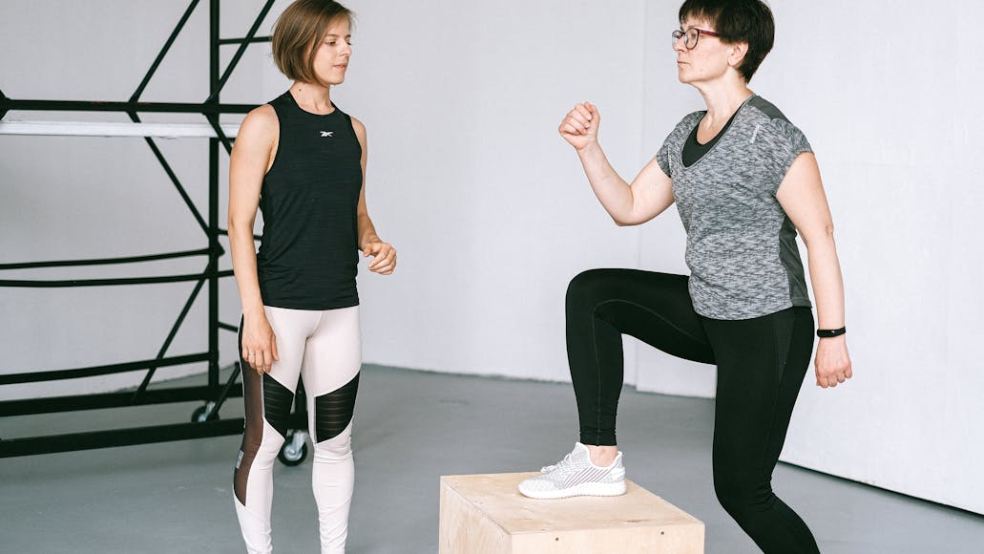
Comparing Personal Training Qualifications: Level 2, Level 3 & Level 4
Becoming a qualified personal trainer in the UK typically involves progressing through several regulated levels: Level 2, Level 3, and occasionally Level 4. Each builds upon the last, equipping fitness professionals with increasingly advanced knowledge and skills. But which qualifications are essential, and which are optional extras?
Level 2 – Gym or Fitness Instructor
Level 2 is the foundational qualification. Commonly titled “Certificate in Gym Instructing” or “Fitness Instructor,” it qualifies you to work in gyms, lead group classes, and conduct basic gym-floor inductions. Level 2 equips students with core knowledge of anatomy, physiology, health & safety, and client consultations.
Career Path:
This level opens doors to entry-level roles like gym instructor, group exercise instructor, or assistant coach. It cannot qualify you as a personal trainer, but is mandatory before progressing to Level 3.
Why it matters:
By obtaining Level 2, you build essential practical and theoretical foundations. As many providers (like Study Active and OriGym) emphasise, Level 2 establishes the prerequisite competence and confidence to design and instruct safe programmes.
Level 3 – Personal Trainer Diploma
Level 3 is the industry-standard qualification required to become a fully accredited personal trainer in the UK. It delves deeper into anatomy & physiology, nutrition, advanced programming, consultation skills, and professional practice, all building on Level 2 foundations.
Career Path:
With Level 3, you can work one-on-one or in small groups, design tailored training and nutrition plans, and work independently or within gyms. This level unlocks the ability to earn a PT rate, starting typically at £20 per hour and rising based on experience.
Combined Level 2 & 3 Diplomas:
Many training providers offer combined Level 2 and Level 3 courses, two qualifications in one package. This route can save time and money versus doing the levels separately. Since Level 2 is a prerequisite, the combined route is a great option for those serious about entering the PT profession quickly.
Level 4 – Advanced/Elite Personal Trainer
Level 4 sits at the top of the UK’s RQF (Regulated Qualifications Framework), roughly equivalent to the first year of university. It includes specialisms, such as corrective exercise, sports conditioning, nutrition coaching, and behaviour change. In theory, Level 4 enables advanced client programming, specialist consultations, and niche roles.
Industry Perception:
However, in practice, Level 4 is not widely recognised or required by most gyms or governing bodies. Create Fit argues that Level 4 “courses are often a waste of time,” noting they aren’t formally endorsed by CIMSPA (the Chartered Institute for Sport and Physical Activity) or mainstream gym operators.
Alternatives to Level 4:
Instead of committing to a whole Level 4 diploma, many personal trainers opt for CPD (continuing professional development) courses tailored to their niche, such as pre- and postnatal training, nutrition, kettlebells, or rehabilitation. These targeted short courses deliver practical, industry-relevant skills at a fraction of the cost.
Do You Need Level 4?
- For general PT work: No. The combination of Levels 2 and 3 is sufficient to work as a qualified PT.
- For specialist roles, but only if you want deep expertise in a niche field. Even then, many go for targeted CPDs or recognised certifications instead.
- Gym and employer requirements: Most gyms only require up to Level 3, and professional development is often supported through CPD rather than pushing for Level 4.
Final Thoughts
- Start with Level 2. It’s essential groundwork and mandatory before moving on.
- Progress to Level 3. This is the qualification that unlocks the PT career, offering the potential for earning and autonomy.
- Consider combining Level 2 and Level 3 diplomas. They’re convenient, often more affordable, and fast-track your progression.
- Approach Level 4 with caution. While theoretically advanced, it lacks widespread recognition. Many experts suggest industry-relevant CPDs provide better ROI.
Takeaway
If your goal is to become a personal trainer, the path is clear: Level 2 → Level 3 (or a combined Level 2 and Level 3). Focus on quality providers with CIMSPA recognition. Level 4 isn’t essential and often less valuable than well-chosen CPD specialisms. By choosing the right qualifications, you build a strong foundation, gain credibility, and prepare for a successful career, without unnecessary detours.











